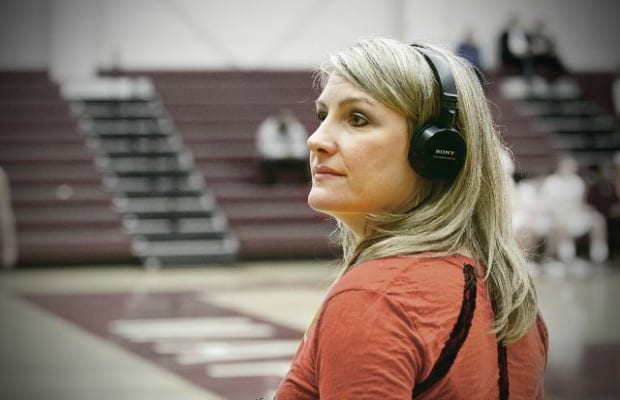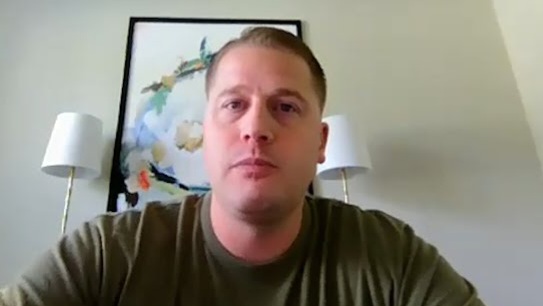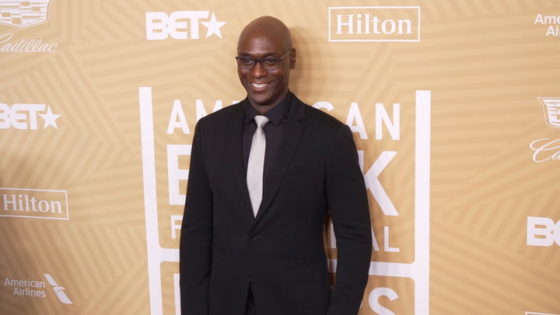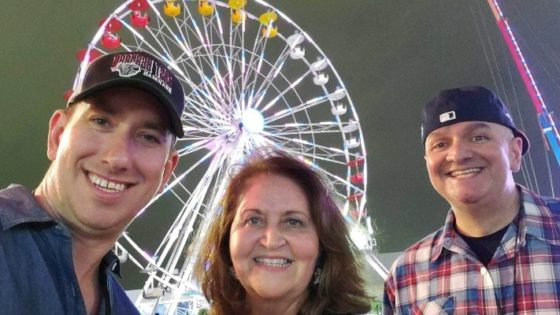Amy S. Weber has directed a documentary styled feature film titled A Girl Like Her which focuses on bullying in High School, specifically a high school that has just been named one of the top 10 schools in the nation on the same day that one of their students, Jessica, has attempted suicide. While a film crew is present at the school to document what should be a celebratory day for the students and staff the crew begins to investigate the apparent bullying that effected Jessica’s decision to try and take her own life, the more popular student behind the bullying, Avery, and the repercussions the event has on both girl’s family, their close friends, and the student community as a whole.
“The film is over a decade in the making. I would say it expands all the way to about twenty years ago when I started doing educational films with youth. I worked a lot with young people… we told their true stories, social topics mostly, but there was one theme that always kept coming back… and that was very low self-esteem; a lack of belief in one self and vulnerability: such a fear of being vulnerable and becoming the target of someone… That was a very sad reality and it never seemed to dissipate ever in any one of the years that I dealt with kids and of course with social media it actually became worse and worse as more information became available. It was a tool for abusers to use to attack their victims and now you can do it basically anonymously and there is very little consequence unless you get caught so the inspiration behind this were the kids out there on the front lines suffering and dealing with this every single day of their lives.”
Once the film delves in to how Jessica is being bullied by Avery a significant portion of it is via online communication both through text message, e-mail, and social media. It illustrates how bullying has evolved over the years. Jessica not only faces torment at school but also while she is in the car and even at home doing homework where it would seem she should be safe from harassment.
An interesting dynamic between Jessica, the victim, and Avery, the bully, is that aside from hair color and their chosen groups of friends, both girls are similar in that they are pretty, popular, and intelligent students that make good grades. The two were even close friends at one point. The focus of the film on an idealized setting and characters with similar idealized lives was a conscious choice by Amy.
“Something that seems so perfect on the outside, somebody who seems to have it all together, like their school [being celebrated as one of the top 10 in the nation]… Even in these cases where things seem really perfect on the outside… underneath that is someone slipping through the cracks. Underneath that, if we don’t take a look at the entire picture and we see all sides of the story, it’s a very sad reality that things aren’t what they appear. That’s why we focused on every day girls… these are the girls that people tend to follow… Sometimes that popularity can be used as a weapon.”
The film briefly gives insight in to how teachers have been instructed, or not instructed, to deal with bullying in the class room. At this particular high school policy for bullying or harassment is even referred to as “rhetoric”. One intense but brief scene shows an angry school board meeting filled with parents and teachers airing their grievances about what has happened to Jessica and how the school should take action. Despite their passion these ideas are met with resistance due to reasons of school policy. Amy communicated that this resistance is all too common in the public school system.
“I’ve found in my experience in working with parents and schools is that there is a great deal of pressure on schools today with enrollment, test scores, and performance over all. With that kind of pressure there is a very set agenda of what schools are trying to get done each semester. Change to a school system is very scary… fear plays a huge role in this. You can’t teach from fear, you can’t administer from fear, you can’t lead from fear. Change takes a great deal of discipline. When [teachers] have been told day in and day out by administrators ‘you have to follow a certain protocol’… their hands are tied in so many ways and they become so frustrated by that very system because it seems to work against them. Denial is one of the major reasons why bullying has become so much worse over the years because were not coming at it from a proactive approach, it’s always approached reactive… The passion is there and they care very much but there is so much already going on that an overhaul, a social experiment if you will, is way too risky and what keeps the school functioning could suffer if they go ahead and do it. That’s why it’s going to take the kids and the parents to motivate and inspire them to want to change.”
Amy spoke about making the film for the sake of the students and to bring about change. She not only approached this story through the eyes of a filmmaker, but more admirably, as someone who hopes to make public schools a safer and nurturing learning environment.
“I didn’t just make this film to be a form of entertainment for 90 minutes. There is a huge movement following this film called The Peacekeeper Movement. So when you ask me what young people can do… what I’m asking them to do is become the leaders in this evolution, not revolution… we’ve written a 7 step process called The Peacekeeper Kit that is downloadable for free to any young person who wants to begin the change. It’s on our website and it’s a simple step by step process to bring social change to the community. It will take youth to lead it, parents to support it, and schools to abide by it. It’s a shift in power but not an overtaking of anything… It is a working together, first recognizing that change has to happen… It is based on healing over punishment… peer mediation and accountability… How on earth do we think we can deal with any issues in our communities without hearing our youth’s voice?”
A Girl Like Her is in theaters now through limited release.






















